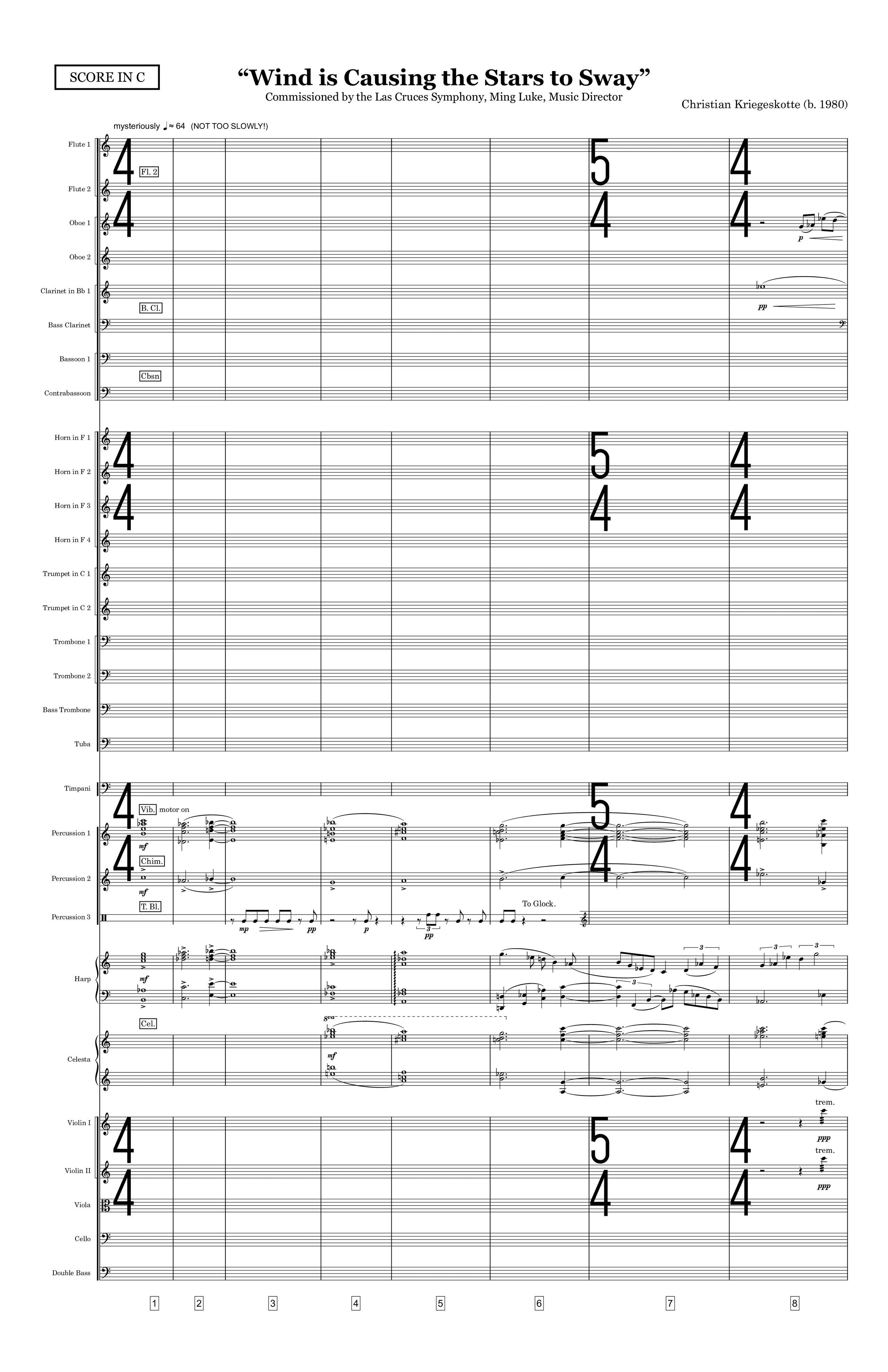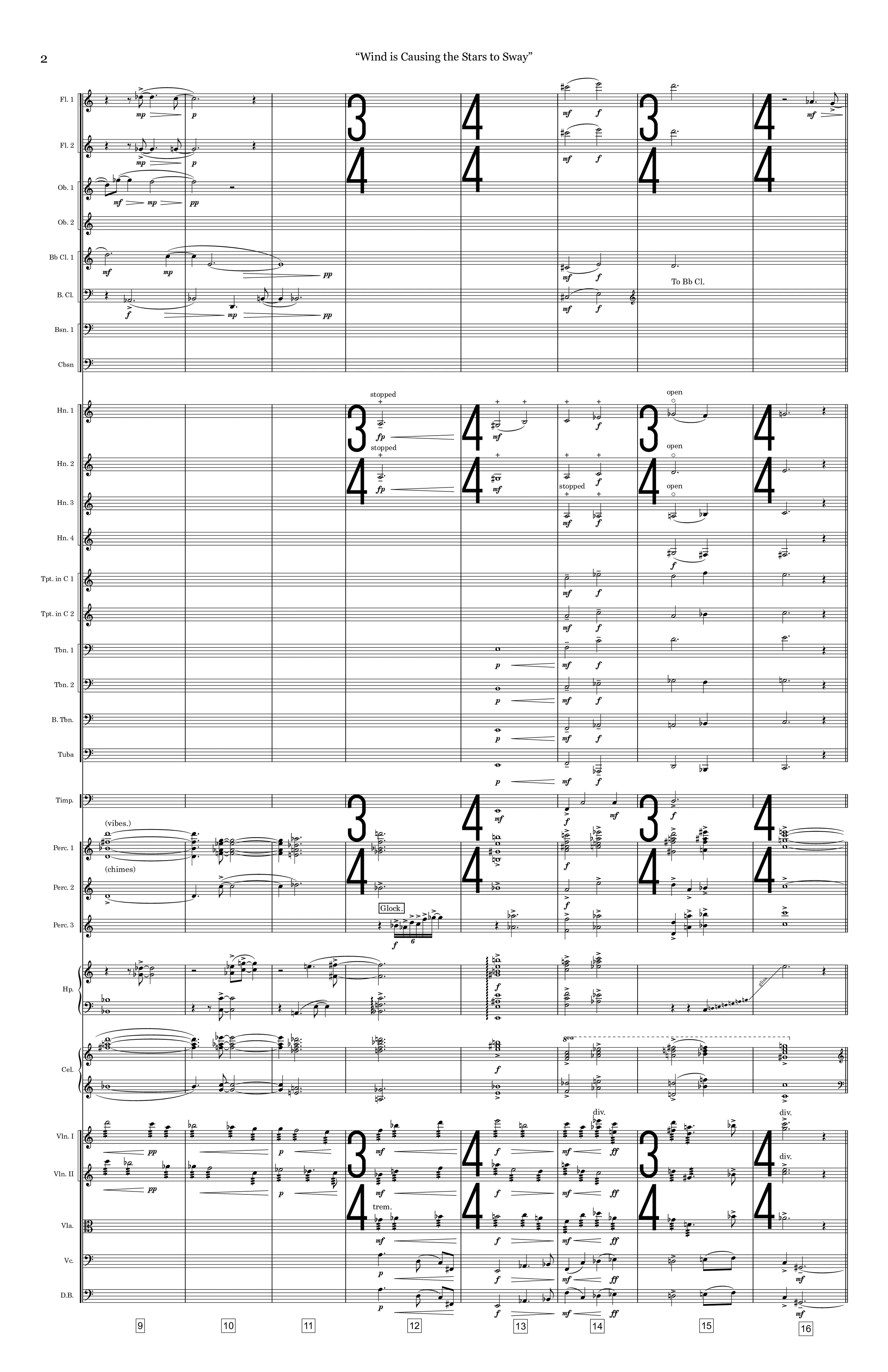

1 / 17
0:00/0:00
Orchestra
2024
Pitched Percussion
- Program Notes
I have always been interested in strange phenomena and fabulous stories of the unexplained. I am not exactly a skeptic, but prefer to question what I see rather than dream up an instant and binding conclusion. I am content to accept that some things remain unexplainable, which is what makes the human experience in the world so remarkable and potentially beautiful. Witnessing something strange and having insufficient data to know what it is shouldn’t invalidate the experience. Nor does it mean it didn’t actually happen. It also doesn’t mean it was aliens. To people of my generation I’m sort of a combination of X-Files Agents Scully and Mulder but I probably relate more closely to Agent Dale Cooper from Twin Peaks. On that note, science applied without imagination is no different to me than religious thinking. As the late Freeman Dyson said, the universe must be infinite in all directions; there is assuredly more to it than we can measure or will ever be aware of. When I was a kid in the mid-1980s, I loved watching Arthur C. Clarke’s Mysterious World and spent countless hours in my elementary school library wondering over the contents of a beautiful coffee table book published by National Geographic called, Our Universe. The latter was a magical tome overviewing what we had learned about space and physics up to 1980, filled with fascinating diagrams and remarkable illustrations. The cover is a painting by John Berkey, who was known for his extensive work illustrating science fiction and fantasy, particularly the classic movie posters of the original Star Wars trilogy (little did I know that one of my first jobs out of college would be in the music department of Star Wars: Revenge of the Sith). The painting depicts a fabulous spaceship traversing some unknown galaxy. Needless to say, my favorite chapter was one that imagined (with full color illustrations) what different aliens might look like if they evolved to inhabit the various planets of our solar system. For some reason this chapter was removed from all subsequent reprintings of the book. Thankfully, I still own a first edition copy, complete with the armillary chart, DIY cardboard telescope kit and an LP of recorded “space sounds'' and galactic radio transmissions. These factors, combined with learning that the entire universe generates ambient sound data through radio waves and galactic rays (and indeed that the planets themselves are capable of singing when the right scientific instruments are tuned upon them) has played an indispensable role in the development of my creative imagination and fervor for telling stories with music.
Some years ago (in 2007 or 2008) I came across the following passage on a now forgotten website: “On September 24, 1235, General Yoritsume [sic] and his army observed unidentified globes of light flying in erratic patterns in the night sky near Kyoto, Japan. It is believed that General Yoritsume enlisted the services of a team of astronomers to investigate the cause of the incident, allegedly making this event the earliest known scientific analysis of a UFO sighting. After some deliberation, the General's advisors reported to him that it was merely the wind causing the stars to sway.” This story is presumed to refer to Kujō Yoritsune, the fourth shōgun of the Kamakura shogunate in 13th century Japan. Sixteen years later, a return to the internet yields the following anecdote in the Wikipedia article overviewing Yoritsune’s reign: “1244 (Kangen 2): In the spring of this year, a number of extraordinary phenomena in the skies over Kamakura troubled Yoritsune deeply.” There is no further information recorded about this event.
A cursory review of additional online references to this tale yields only paranormal and cryptid investigators and ufologists drawing biased confirmations that the former, unverified story contributes to the body of possible evidence that the ancient and classical worlds were, for some reason, visited by aliens. Interestingly enough, while the internet's base for validating pseudoscientific claims, conspiracies and urban legends has immeasurably deepened in the years since 2007, so too has the public’s awareness, interest and validation of so-called UFOs. It would have been hard to imagine back then that a decade and a half later both the United States and Japanese governments would hold public hearings in governmental chambers and establish legitimate ministries to investigate these matters. Without suggesting there are really aliens out there watching us, in a much more pragmatic way than the TV show predicted The X-Files has come true. “Wind is Causing the Stars to Sway” is a work for orchestra that is meant to provide a soundtrack for the curious, apocryphal tale of “General Yoritsume” and what he and his soldiers might have witnessed in the skies above medieval Kyoto. The underlying themes are rooted in the pitfalls of pseudoscientific investigation and circumstantial evidence being used to bolster present day, presupposed conclusions about UFOs and the significance of humanity’s position in the cosmos.
- Recording Notes
World premiere performance by the Las Cruces Symphony, Ming Luke, conductor. Atkinson Recital Hall, New Mexico State University, Las Cruces, New Mexico. Saturday, March 29, 2025.
- Performer Credits
- Las Cruces Symphony, Ming Luke, conductor
- Publisher
- Argent Owl Press (ASCAP)